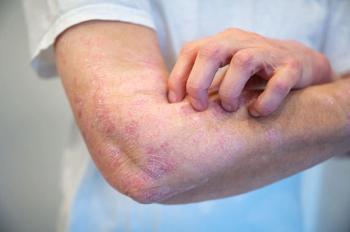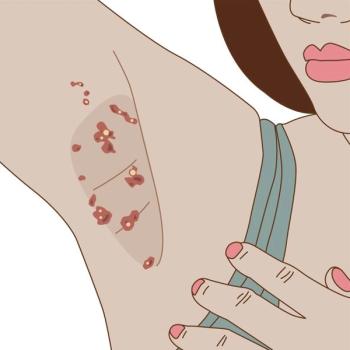
Skin Disorders in Elderly Persons: Fungal Infections
Tinea corporis appears as an annular plaque with a rim of scaly erythema.
Figure 1 –
An annular plaque with a rim of scaly erythema arose on this woman's back. Tinea corporis was diagnosed.
Figure 2 –
The polycyclic annuli on this patient's torso were suspected to be tinea corporis. A potassium hydroxide evaluation confirmed the diagnosis.
Tinea Corporis
Tinea corporis occurs most often on the torso of elderly persons. It commonly appears as an annular plaque with a rim of scaly erythema (Figure 1). Occasionally, tinea corporis manifests with polycyclic annuli (Figure 2) or with nummular plaques, which mimic nummular dermatitis. The examination of a potassium hydroxide preparation can establish the diagnosis. Tinea corporis can be treated effectively with a topical antifungal agent.
References:
FOR MORE INFORMATION:
- Brodell RT, Elewski B. Superficial fungal infections. Errors to avoid in diagnosis and treatment. Postgrad Med. 1997;101(4):279-287.
- Loo DS. Onychomycosis in the elderly: drug treatment options. Drugs Aging. 2007;24:293-302.
- Tan JS, Joseph WS. Common fungal infections of the feet in patients with diabetes mellitus. Drugs Aging. 2004;21;101-112.
- Weinberg JM, Scheinfeld NS. Cutaneous infections in the elderly: diagnosis and management. Dermatol Ther. 2003;16:195-205.
- Weinberg JM, Vafaie J, Scheinfeld NS. Skin infections in the elderly. Dermatol Clin. 2004;22:51-61.
Newsletter
Enhance your clinical practice with the Patient Care newsletter, offering the latest evidence-based guidelines, diagnostic insights, and treatment strategies for primary care physicians.
















































































































































































































































































